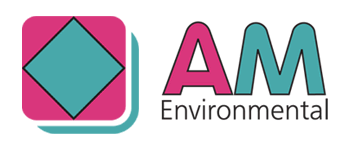It has been over 200 years since the German Chemist, Leopold Gmelin, first published his handbook – Gmelin released the Handbook of theoretical chemistry, which was continued as the Gmelin Handbook of Inorganic Chemistry until 1997 in about 800 volumes by the Gmelin Institute, and it is continued by the Gesellschaft Deutscher Chemiker as a database.
In 1817, the newly appointed German professor started a quiet revolution in scientific publishing. When the first volume appeared, the world of chemistry began to change. Today his brainchild still survives, sustained by a technological infrastructure he could scarcely have imagined.
The increase in the number of known substances during this period encouraged several authors to compile chemical dictionaries. However, Leopold Gmelin’s Handbuch became widely recognised as a valuable addition to the literature.
The first edition of Gmelin’s master-work appeared between 1817 and 1819, under the title Handbuch der theoretischen Chemie. Two volumes covered inorganic chemistry, with a third devoted to organic substances – though by the third edition (1827-9) the rapid development of organic chemistry had made it necessary to reverse these proportions. Throughout the rest of his life, Gmelin was involved in revising and updating this work.
Chemistry underwent several theoretical upheavals during Gmelin’s professional lifetime, and leading figures in the subject frequently criticized each other’s ideas in highly intemperate language. But throughout these conflicts, Gmelin’s book was widely accepted as an authoritative guide for students and advanced researchers. Several factors probably contributed to its remarkable success. Firstly, the Handbuch was factually comprehensive. It attempted to cover all the known elements and compounds and their most significant properties – insofar as this was possible in an era when discoveries occurred frequently and book production was slow.
Secondly, Gmelin did his best to avoid becoming involved in the controversies which generated so much ill-feeling among contemporary chemists. The obituary cited above states that he assembled ‘in a purely objective view, and on the authority of several investigators, all that has been observed within the domain of chemistry – not indeed, withholding his own opinions, but placing them side by side with those of others, and never suppressing the latter.’
Gmelin’s book was systematically organised, with all its data supported by citations of original sources. The foundation of this enterprise was a continually updated card index, the remote precursor of today’s electronic Gmelin database. The card index was not a novel concept – it had been pioneered by the Swedish taxonomist Linneaus in the 1700’s – but Gmelin made particularly effective use of it.
The fourth edition of Gmelin’s great work – by them simply titled Handbuch der Chemie – began appearing in 1843. Gmelin supervised the production of its first four volumes, but after his health declined the fifth (published 1852) was completed from his notes by his associates Karl List and Karl Kraut. Kraut added further supplementary volumes to his edition until 1870, while simultaneously preparing a fifth edition (on which Gmelin had been working until shortly before his death).
This and all subsequent editions of the Handbook covered only inorganic (and organometallic) chemistry. The resulting gap was filled by Friedrich Beilstein (1838-1906), who launched a parallel handbook or organic substances in 1881, revised editions of which continued to appear long after his death. The authoritative status of both works was confirmed when the Deutsche Chemische Gesellschaft (German Chemical Society) took responsibility for overseeing their publication in the early 20th century. In the 1920s, the continual updating of these handbooks was delegated to the Gmelin and Beilstein institutes – both subdivisions of the Kaiser Wilhelm Institute for the Promotion of the Sciences, founded in 1911. The German chemist Erich Pietsch joined the Gmelin editorial team in 1925, became editor-in-chief in 1936, and remained in charge when the Kaier Wilhelm Institute was dissolved in 1946. The Gmelin Institute then became a subdivision of the newly-founded Max Planck Institute.
In the 1950’s Pietsch and his team steered the Gmelin project into a new era of data retrieval, using machine-sorting of punched cards to answer queries sent in by teletype. By then, however, it was already apparent that such operations would eventually be handled by electronic computers. In the early 1970s Margot Becke-Goehring ( a former professor of chemistry at Heidelberg who became director of the Gmelin Institute in 1969) negotiated an agreement between the Institute and the Springer-Verlag publishing corporation which would eventually take the Handbook into the digital age.
Meanwhile, significant changes were under way in the ever-expanding print edition of the Handbook. Since 1958 the table of contents and section headings had been printed in English as well as German, but from the early 1980s the full text of all new volumes was in English. In 1997 an electronic Gmelin database becamse commercially available, and since 2009 this facility ( along with the Beilstein database and much else besides) has been accessible online via Elsevier’s Reaxys chemical information system. However, the online Gmelin does not yet include many items (particularly diagrams and tables) from the pre-1975 print editions, and consequently some university libraries still keep several hundred of these volumes available for reference. The handbook’s continuing utility, two centuries after its first appearance, is a worthy memorial to the diligence of its originator.
Taken from www.chemistryworld.com

